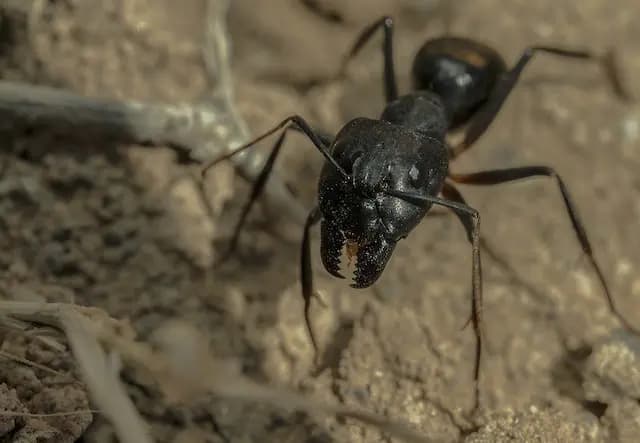When people talk about pests in the home, carpenter ants don’t always get the attention they need. Although termites are known to eat wood, carpenter ants would rather make their homes in it. Even though these ants look harmless, they can be very bad for your home’s structure. This guide will tell you about the interesting and possibly dangerous world of carpenter ants and help you figure out if your home is at risk.
Meet the Bad Guys: Carpenter Ants
Carpenter ants are strong bugs that come in a range of sizes and colours. The black carpenter ant, which is about half an inch long, is the most common type. One thing that makes them unique is that, unlike other ants, their body is round all the way around. It’s not that these ants are eating wood; they’re just digging holes in it to make their galleries, which are their homes. The trouble starts with the fact that they like to dig holes in trees to make shelter.
The Signs of Trouble:
- Wood Shavings: Carpenter ants are very good at digging, and small pieces of wood shavings around your home are one way to tell if they are there. If you see these shavings near walls, windows, or other wooden structures, you should look into it more.
- Listening: Sometimes you can hear carpenter ants working, and it might sound like a scene from a scary movie. It sounds like rustling or cracking as they carve out holes in wood.
- Carpenter ants are most busy during their swarming season, which is when they start new colonies. You can be sure that there are carpenter ants in the area if you find broken wings near windows, doors, or other entry points.
- Pile of Frass: Carpenter ants don’t eat wood, but they do leave behind frass, which looks like a mix of little pieces of wood and bugs. These piles can help you find a nest close.
Is your house in danger?
Not every house is automatically likely to get carpenter ants, but the following things make a house more likely to get them:
- Structures Made of Wood: If your home has a lot of wooden parts, like decks, porches, or even shingles made of wood, carpenter ants may be able to find more places to live.
- Problems with Moisture: Carpenter ants are drawn to wood that is wet or rotting. Any problems with moisture, like a roof or base that leaks, make the house a good place for pests to live.
- Location: Homes that are close to forests or places with lots of trees are more likely to have carpenter ants because they are closer to where they normally live.
- Cracks and Gaps: Carpenter ants can easily get into your home through gaps and cracks on the outside. The risk goes up if you haven’t properly sealed these places.
How to Keep Your Home Safe:
- Regular Checks: Look for signs of carpenter ant activity in your home every so often, especially in the spring and summer when they are most busy.
- Get rid of wetness: Fix any problems with moisture right away. Fix any leaks, make sure there is enough air flow, and keep the wood dry.
- Seal Entry Points: To keep ants out, seal any holes, cracks, or crevices on the outside of your home.
- Professional Pest Control: If you think you have an issue, you should talk to a professional pest control service. They can correctly figure out how bad the problem is and use methods that work.
Finally, carpenter ants are just as likely to do a lot of damage to your home as termites, even though they aren’t as well known. To keep these quiet house wreckers out of your home, you need to be careful, deal with risk factors, and act quickly if you think you have an infestation. Don’t underestimate the dangers; if you have a problem with carpenter ants, you need to take action right away to protect the structure of your house.
Ant Control Newmarket, we are well aware of all the risks associated with ants. However, when it comes to ant trouble, no infestation is too big for us. Our technicians are fully licensed and insure and know everything there is to know about ants, right from identifying the species to the proper process of exterminating them.
